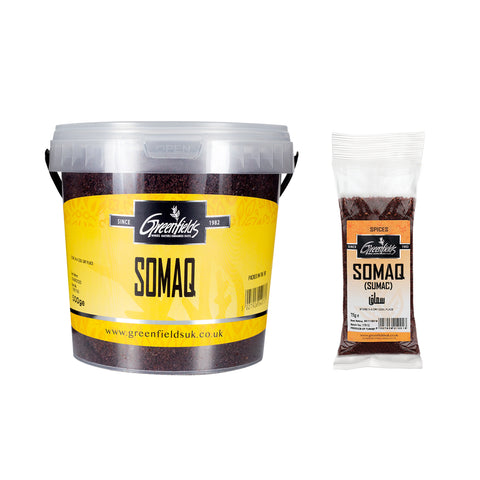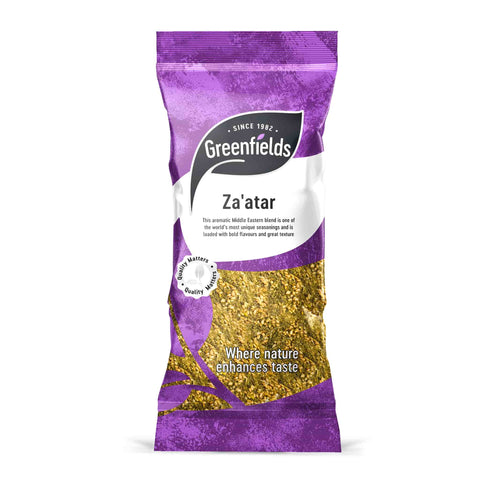Persian Spices: The Essential List For Flavouring Persian Food

Persian cuisine is many things - colourful, rich and full of flavour. But it is also simple, healthy and very comforting, with recipes that are centuries-old. Incorporating a cornucopia of ingredients including rose petals, dried fruits and green pistachios, this food draws on the land’s rich natural culinary resources and is a feast for the senses.
And in the treasure box of Persian ingredients, the spices are the glittering jewels. From the sweetness of cinnamon to the luxury of saffron, the lemony zing of sumac to the warm versatility of ginger – the spices liberally drenched in and on Persian food are dynamic, flavourful and aromatic.
Persia is one of the oldest civilisations on the planet and is now where modern-day Iran stands. While its borders fluctuated through history, at its most expansive - around 2500 years ago - the Persian Empire extended to Egypt, Greece and Turkey.
With its geographical position and changing boundaries, Persian cooking draws upon a multitude of influences including Russian, Greek, Asian and Armenian.

The Versatility of Persian food
Persian food is brilliant for gluten-free diets, vegetarians and vegans. While there is an emphasis on meat, there is an equal amount of attention paid on delicious vegetable dishes accompanied by nuts, fruit and rice.
However, herbs and spices are the backbone of Persian cuisine and give incredible and distinct flavours to this style of cooking.
Is Persian Food Spicy?
Unlike other countries, Persian spices are used to give warmth and flavour to a meal, rather than heat, which makes this food ideal for anyone sensitive to chilli.
If you’re planning a Persian-style dinner party, you have to start with a good spice collection. With most spices, we recommend grinding them in the kitchen, rather than buying them already ground. Spices provide more punch and fragrance when you grind them at home, so it’s a good idea to invest in a good quality spice blender or pestle and mortar.
The most popular Persian spices
While there is a whole gamut of spices to be enjoyed in Persian cooking, the following are some of the most popular:
How To Use Saffron
Despite being expensive, a tiny bit of saffron goes a long way. This spice comes from the stigma of the crocus flower, where 150,000 flowers are used to make up one kilo of saffron. However, a tiny pot in the kitchen cupboard will last a while, and a minute pinch gives a delicately fragrant taste to cooking as well as lending an orange/yellow colour to food.
What does Dried Lime Taste Like?
Add dried limes to stews for a smoky sour taste, dried limes can be used whole or crushed. Lime powder gives a far stronger taste and is a great way of cutting through the richness of a lot of Persian one-pot cooking.
What Is Persian Sumac?
Sumac is a pungent spice which combines flavours of citrus and saltiness to give a really moreish taste. The spice comes from the ground-up fruit of the sumac plant which grows in the Middle East and Asia. Persian cookery uses sumac where lemon juice would normally be used – so on meats, salads and soups. But is also a fantastic meat tenderiser as well as a garnish to hummus and other mezze dishes.
Using Ginger In Persian Cooking
While ginger is used throughout the whole of Asia, it’s a key part of Persian cooking. Used dried, ginger loses it fresh fieriness and takes on a comforting warmth that permeates chicken, aubergine and lentil dishes.
Using Coriander Seeds
Toasted and crushed, coriander seeds provide a lemony and slightly nutty taste to Persian food, especially meat dishes.
How To Use Cinnamon In Sweet & Savoury Dishes
Cinnamon is used in puddings and also on meats in Persian cooking. This spice can be fierce and brash but also mellow and floral depending on how it is used and how much of it is used. Cinnamon is one of the most versatile of all the spices.
Using Turmeric In Persian Recipes
Related to the ginger family, turmeric is the boiled, dried and ground up root of the curcuma longa. Aside from its incredible health benefits, turmeric is also used to give an earthiness and mustardy taste to dishes, as well as a bright yellow hue that can be used to colour rice and soups.
Persian spice blends
If you’re getting into Persian cooking, it’s also important to be familiar with the spice blends. These blends are unique to this type of cuisine and give Persian dishes their distinctive flavour. These Persian spice mixes can be bought off the shelf or can just as easily be concocted at home.
What Is Za’atar?
Tthis is a popular spice mix containing thyme, sesame seeds, sumac, oregano, cumin and marjoram. It’s a key ingredient to so many Persian dishes, from chicken to dips, eggs to cheese. A favourite family snack is to tear up some fresh bread, and dip the morsels into olive oil and a pile of za’atar.
What Is Advieh?
Like garam masala to Indian cooking and ras el-hanout in Moroccan cuisine, all Persian kitchens will have advieh in their cupboards. A mixture of cinnamon, turmeric, ginger, cumin, caraway, coriander, cloves and cardamom. This blend is equally good on savoury meat dishes as it is on sweet Persian rice puddings.
What is Baharat?
This spice mix is used across the Middle East, with each area having a little twist on the basic mix of paprika, nutmeg, pepper, coriander, cinnamon, cardamom, cloves, cumin. In Persian cooking, dried black lime, or loomi, is often added to Baharat.

Other Persian ingredients to look out for...
Aside from spices, a good Persian kitchen cupboard will also have some essential staples which include dried limes, dried rose petals and a host of fresh green herbs which should include parsley, coriander, mint, tarragon, mint, dill and fenugreek.
Fruit is also integral to Persian cooking with barberries, pomegranate, apricots, raisins, quince, prunes and plums all having a starring role in countless Persian recipes.
What Is The Best Persian Food?
A lot of the best Persian food is about sharing. Think wonderful mezze platters of dips and breads, and fragrant stews and bites to enjoy with a big group of friends and family. This Persian Fesenjan Stew Recipe is a brilliant example of the depth of flavour in Persian dips and stews.
Take a look at the Persian Cookbook Set including Sabrina Ghayour’s book Persiana, or try our recipe for Persian Love Cake.
Top 5 Persian Spices:
Saffron is a fragrant spice used in sweet and savoury dishes. It’s sometimes called ‘red gold’ in a nod to its price point and the colour of the threads. Saffron has a complex flavour best described as earthy and slightly sweet.
Dried white limes, also known as dried limes or dried limes, infuse sauces with complex citrus flavours and subtle fermented notes. Dried white limes are made from ripe, green limes which have been soaked in brine.
Sumac comes from dried and coarsely-ground berries which have a sour, citrus-flavour. Growing in clusters, the dried berries are widely used throughout Middle Eastern cuisine in place of lemon juice, vinegar or tamarind.
Baharat is one of the essential spice blends in persian cuisine. Use to season minced lamb for koftas or sprinkle over cauliflower before roasting.
Za'atar is an aromatic herb blend for Middle Eastern flatbreads. Mix the zaatar with olive oil to make a paste and spread over flatbreads before baking. Or mix into yoghurt or hummus to make a dip.
Market spices photograph by Tom Hermans on Unsplash
Spices photograph by Agnieszka Kowalczyk on Unsplash








